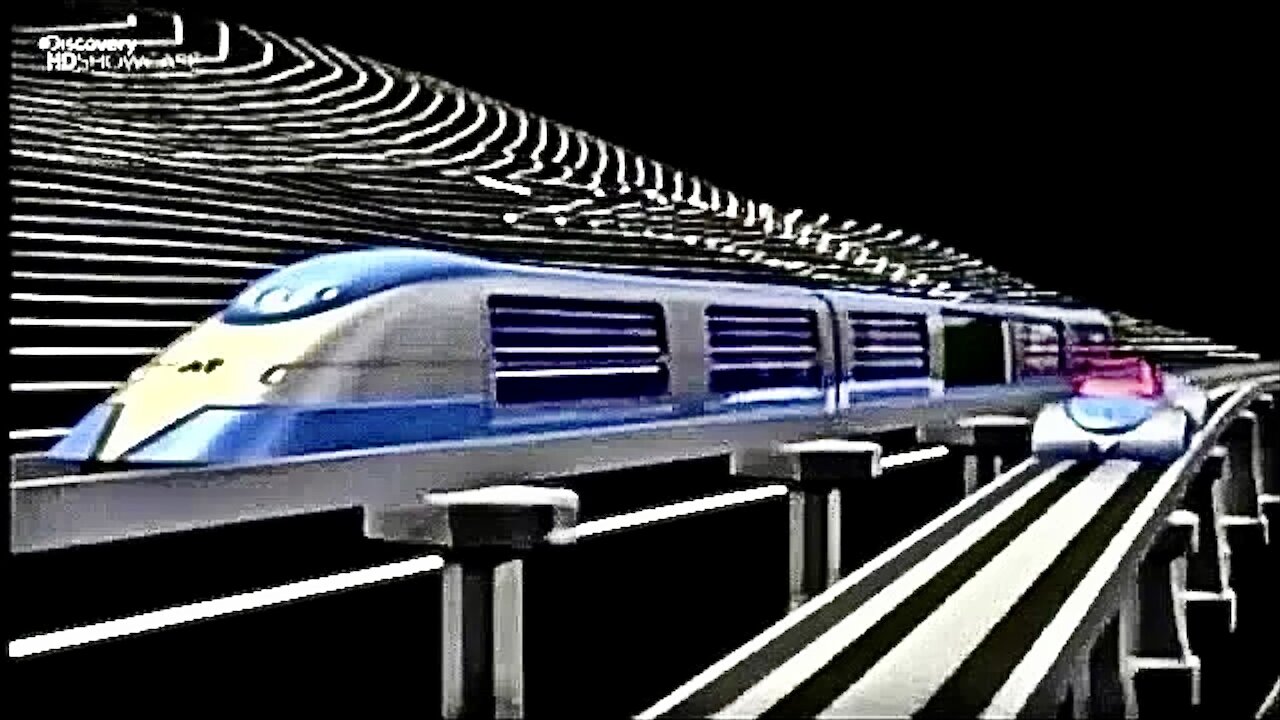Premium Only Content

Amazing Future Trains
The Evacuated Tube Transport (ETT) system envisions superconducting maglev trains operating in evacuated tubes at speeds of up to 6,500 km/h (4,039 mph) on international trips - that's New York to Beijing in two hours! The proponents of this system say that ET3 could be 50 times more efficient than electric cars or trains. Terraspan goes even further than ultra-efficient mass transport with its vision for a network of superconducting tunnels. As well as providing infrastructure for "Terraspan trains," this network would also facilitate zero loss transmission of electricity to our homes.
A 500 km/h (310 mph) vacuum train project has also been proposed for Switzerland, but as the Swissmetro site outs it: "So a far-advanced technology of and for the next generation remains in the drawer."
Another high-speed rail concept that aims to present an alternative to conventional systems without the astronomical price tag is Anatoly Unitsky's String Transport System. The concept is based on the use of what look like heavy-duty above ground electrical wires, but instead of carrying power, these high-tension wires become the support for carriages.
The proponents of the system see big advantages in terms of cost (somewhere between three and 10 times less expensive than a railway, maglev system, monorail system or motorway) and efficiency (an 80 kW (107hp) motor would take a 20-person passenger vehicle up to 155 mph (250 km/h)).
Taking the above ground rail concept further (and then turning it on its head) is Robert C. Pulliam's Tubular Rails. In this system the trains themselves carry the tracks, while the wheels and motors are contained in elevated rings that the train passes through at speeds of up to 240 km/h (150 mph). Because the design would cause minimal disruption to existing infrastructure and the technology is readily available, Tubular Rail estimates that construction costs could be 60 percent less than conventional urban train networks.
The quest for more efficient transport systems doesn't necessarily have to come at the cost of speed. The SolarBullet project is a campaign aiming to bring high-speed (we're talking 220 mph (354 km/h)) trains to Arizona using tracks equipped with solar panel carrying canopies that would provide the 110 megawatts of electricity that the system needs to run. The project is currently in the R&D phase but faces several hurdles (not the least of which is an estimated US$27 billion pricetag) before construction of the planned Tucson to Phoenix line can get underway.
-
 12:27
12:27
JSkeleton (Gaming)
5 years agoThe Future of Destiny is AMAZING!
17 -
 0:37
0:37
Aussie Ridgie Rumble
3 years agoBest Uncle Dog Ever, Trains Future Tug Champ Puppy
503 -
 LIVE
LIVE
The Quartering
23 hours agoYule Log Christmas MAGA Edition With Memes! Come Hang Out!
1,469 watching -
 38:41
38:41
MYLUNCHBREAK CHANNEL PAGE
1 day agoTimeline Begins in 1800? - Pt 1 & 2
42.6K32 -
 1:23:41
1:23:41
Game On!
23 hours ago $9.53 earnedNetflix NFL Christmas Games Preview and Predictions!
56.6K9 -
 2:05:07
2:05:07
Darkhorse Podcast
1 day agoWhy Trump Wants Greenland: The 257th Evolutionary Lens with Bret Weinstein and Heather Heying
289K456 -
 8:50:58
8:50:58
Right Side Broadcasting Network
1 day ago🎅 LIVE: Tracking Santa on Christmas Eve 2024 NORAD Santa Tracker 🎅
341K48 -
 2:48
2:48
Steven Crowder
1 day agoCROWDER CLASSICS: What’s This? | Nightmare Before Kwanzaa (Nightmare Before Christmas Parody)
316K12 -
 33:49
33:49
Quite Frankly
1 day agoThe Christmas Eve Midnight Telethon
118K22 -
 2:12:46
2:12:46
Price of Reason
1 day agoAmber Heard BACKS Blake Lively Lawsuit Against Justin Baldoni! Is Disney CEO Bob Iger in TROUBLE?
69.1K24